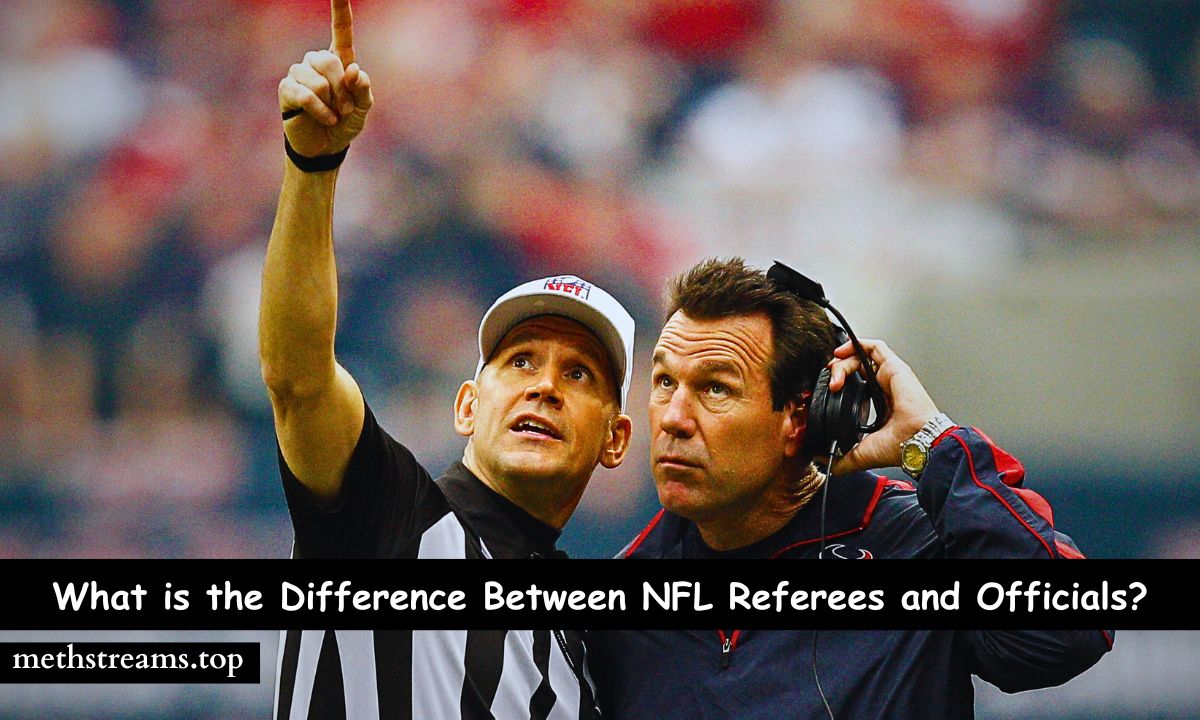The National Football League (NFL) is the superior expert American soccer league in the United States. With tens of millions of visitors tuning in each week, the NFL is predicated on a crew of referees and officials to make sure that the guidelines of the game are upheld always. But what is the distinction among referees and officials? Let’s delve into the intricacies of the NFL rule-enforcers and apprehend their roles and distinctions.
1. Overview of NFL Officials
NFL officials are a group of 7 people, responsible for overseeing and administering the game. They’re the individuals in striped shirts, making calls and making sure honest play on the sphere. While many casually use “referee” to consult any of these officers, simplest certainly one of them is technically the “referee.” The different six have one of a kind titles and duties.
2. The Role of the Referee
The Referee is the head reputable, with more precise responsibilities and a awesome role compared to different officers. Recognizable with the aid of the white hat, in place of the black hats worn by way of the rest of the group, the Referee has the final say in any choices on the sector. Here are a number of the Referee’s number one roles:
Game Management: The Referee is answerable for ensuring the float of the game. This consists of handling timeouts, ensuring the clock runs as it should be, and managing any surprising stoppages or issues which can stand up.
Uphold Integrity: The Referee ensures that the game is performed in the policies and maintains the sport’s integrity. If there may be any doubt or dispute about a name, the Referee’s phrase is final.
Communication: As the face of the officiating group, the Referee communicates selections to the audience, both inside the stadium and looking on television. They’ll explain consequences, review consequences, and every other sport-associated decisions.
3. Other On-Field Officials and Their Duties
While the Referee is the head honcho, the opposite six officers are vital for the game’s clean walking. Their roles, frequently specific to elements of the field or types of performs, encompass:
Umpire: Located typically at the back of the defensive line and linebackers, the Umpire watches for holding and blockading violations. They also spot the ball for the subsequent play.
Down Judge: Positioned on one cease of the road of scrimmage, the Down Judge is answerable for tracking offside or encroachment violations. They also keep tune of the downs.
Line Judge: Positioned opposite the Down Judge, the Line Judge has comparable duties. Additionally, they oversee the chain crew and regularly help with spotting the ball.
Field Judge, Side Judge, and Back Judge: These officers have number one obligations within the passing sport, monitoring extensive receivers, ensuring defensive backs aren’t interfering, and watching for pass interference or illegal touch.
Back Judge: Positioned deep inside the secondary, the Back Judge is chargeable for overseeing deep passes, making sure honest catch alerts are commemorated, and looking for pass interference.
4. Training and Qualifications
Becoming an NFL respectable, whether a Referee or every other position, calls for years of education and experience. Most officials begin on the high college or collegiate level and paintings their way up via the ranks.
Officials should undergo rigorous education, each in information the intricacies of the NFL rulebook and in physically keeping up with the sport’s pace. They attend workshops, clinics, and schooling camps, usually updating their expertise and honing their capabilities.
Additionally, they’re graded on their overall performance. Those with steady, pinnacle-tier performances have the hazard to officiate in high-profile video games like the Super Bowl.
Read More: How Much Do NFL Referees Earn During the Super Bowl?

